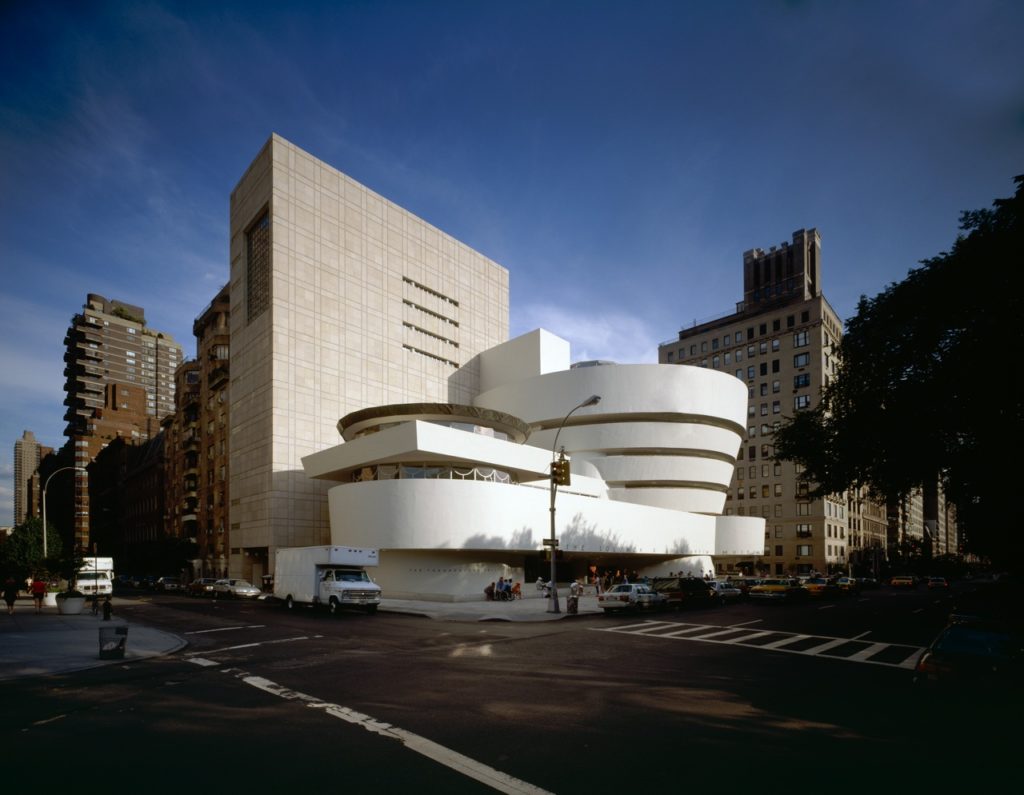Below is another profile of architect who had pursued a different path as outlined in Becoming an Architect; as implied in the title, this position was “pretty cool” for Megan Chusid. Now, Megan serves as the Project Lead / Senior Project Manager for UPC (Urban Projects Collaborative, LLC. in New York.
Are you an architect in a career beyond? If so, let me know if you would be interested in being profiled for ARCHCareersGuide.com.
Pinch Me!
Megan S. Chusid, AIA, Manager of Facilities and Office Services
Solomon R. Guggenheim Museum & Foundation
New York, New York
Why did you become an Architect?
My passion was always in photography and growing up I spent hours hidden away in a dark room learning how to carefully develop negatives and prints. Contrast and the timing and precision needed for the chemicals and the exposures were a technical science for me that I greatly enjoyed. As a career choice made a turn when my mother urged me to choose a more formal profession. Architecture was the creative and technical career choice and photography will always be a hobby.
Why did you decide to choose the school, Syracuse University? What degree(s) do you possess?
My high school guidance counselor handed me a compact pamphlet of architecture schools and after reviewing them, I only applied to NAAB accredited programs. I narrowed down my acceptances according to the following criteria: proximity to home (New York City), the school’s ranking in the US, and scholarship opportunities.
I received a five-year Bachelor of Architecture from the School of Architecture at Syracuse University.
In your position as Manager of Facilities and Office Services, what are your primary responsibilities and duties? Please describe a typical day.
My primary responsibility at the Guggenheim is to serve as the property administrator for all owned and leased properties in the New York area. In addition, I manage the department that provides all of the office services required within and between all of the properties.
A typical day includes meetings ranging from discussions about capital projects to logistics of upcoming art exhibitions. Besides the typical maintenance and repair issues that arrive throughout the day, I spend a great deal of time meeting with various departments within the museum to better understand the ever-changing staffing and space requirements. No two days are ever alike and every day I find out new things about the museum.

PHOTOGRAPHER: DAVID HEALD © THE SOLOMON GUGGENHEIM FOUNDATION, NEW YORK.
Please share what it is like to work in / with the iconic structure, the Solomon R. Guggenheim Museum designed by Frank Lloyd Wright.
Working in and with one of the most iconic pieces of architecture in the world is like having a “pinch me” moment every time I walk in the door. My favorite part of my job are the small periods of time when I get to research the original materials and construction details. When I look through shop drawings and submittals, I am either reviewing 1956-9 documents that are carefully stored in a controlled environment or requesting archive documents that were personally signed by FLW.
Previously, you worked as a project manager for a traditional architecture firm and director of operations for a construction management firm. How were these two positions the same? different?
The two positions utilized and honed very different skills. Working at a traditional firm I learned how to put together a proper set of construction documents for a building as well as the skills for effectively managing a project from conception and zoning feasibility through final construction. In my role at Richter + Ratner, I was able to sit on the other side of the table at a boutique construction management company where I learned the construction side of getting things built as well as the business side of running a company.
What has been your greatest challenge as an Architect?
Mainstream society, outside of the architecture, engineering, construction and real estate industries, and in some cases, the art world, don’t necessarily understand the full meaning of what Architects can do and what they contribute to society.
What is the most / least satisfying part of being an Architect?
Taking the Architect Registration Exams (ARE) are the least satisfying part of becoming an Architect but the day you receive your final PASS letter is the most satisfying.
Who or what experience has been a major influence on your career?
WHO comes down to my first boss, my mother who I learned project management, working with clients, seeing all possibilities, practicality.
WHAT experience could be more influential than being an Architect working in and getting to care for one of the most famous pieces of Architecture in the world?
